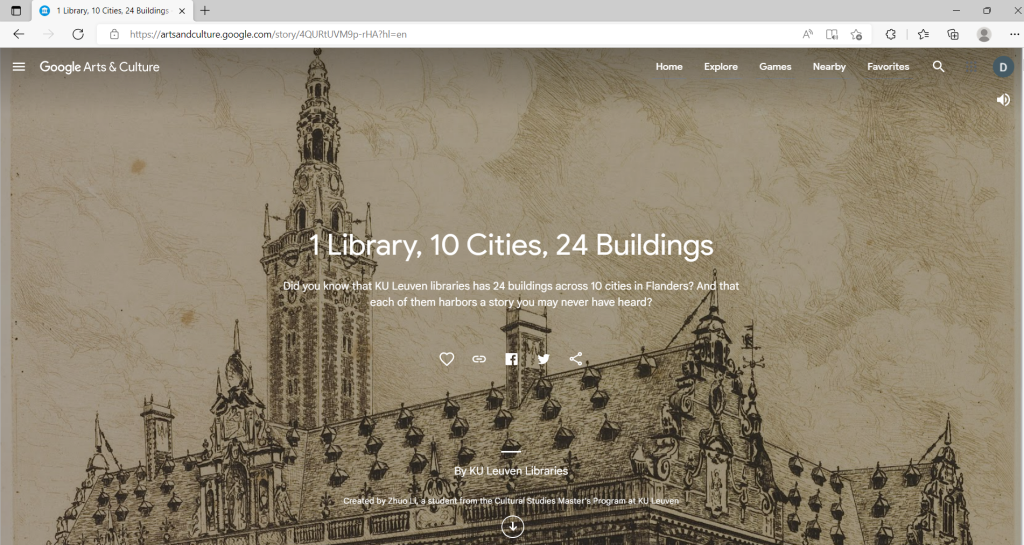by Nele Gabriëls, Zhuo Li & Hendrik Hameeuw
KU Leuven Libraries creates, year after year, large quantities of data. A big portion of it consists of visual media accompanied with a variety of predetermined and structured metadata. It is all brought together into is its own Unified Resource Management System ALMA and preservation environment Teneo (back office), where that data is respectively managed and stored for long term preservation and from where it is harvested and made searchable via its online library catalog LIMO (front office). Within its own biotope, that same data can also be structured and presented differently, for example into virtual exhibitions via EXPO or via topic-specific platforms such as Digital Heritage Online. Equally, but outside its biotope, periodically selected sub-collections are made available via the portal site EUROPEANA.EU.
KU Leuven Libraries keeps exploring how this structed and well-preserved data can be further reused via or on other new or established platforms, all in support of its open data policy. Several interns have already worked on this challenge and came up with refreshing examples. You can read all about the work by Mariana, Allison, and Luna. This post presents the work by Zhuo.

Zhuo Li joined the Department of Digitisation as an intern student of the Cultural Studies Master’s program at KU Leuven. She took on the challenge to investigate how a standard digitised collection ‘as it is created and managed at KU Leuven Libraries’ can be transferred and curated into a Google Arts & Culture story. Zhuo assessed the interoperability of the available data and subsequently mapped out the steps to make it fit in the Google Arts & Culture architecture. First, a selection of the available metadata per image was uploaded in batch to the Google data management dashboard. The uploaded metadata included a field with a url linking back to the original digital representation (cross platform) of the item in the KU Leuven Libraries repository as shown in the library’s viewer. Next, the images were uploaded to KU Leuven Libraries’ Google Arts & Culture collection. The Google data management dashboard linked metadata with images.
With this data, Zhuo could create her story which gives an overview of the various locations of the KU Leuven Libraries facilities across Flanders & Brussels. For each location Zhuo selected one or two items from the KU Leuven Libraries digitized collections to illustrate the history of these locations decades or centuries back in time.
All the materials used in the story, beside the Google Street View and YouTube plugins, are from KU Leuven Libraries Digital Heritage Online and include digitized items dated to the Modern Age.
